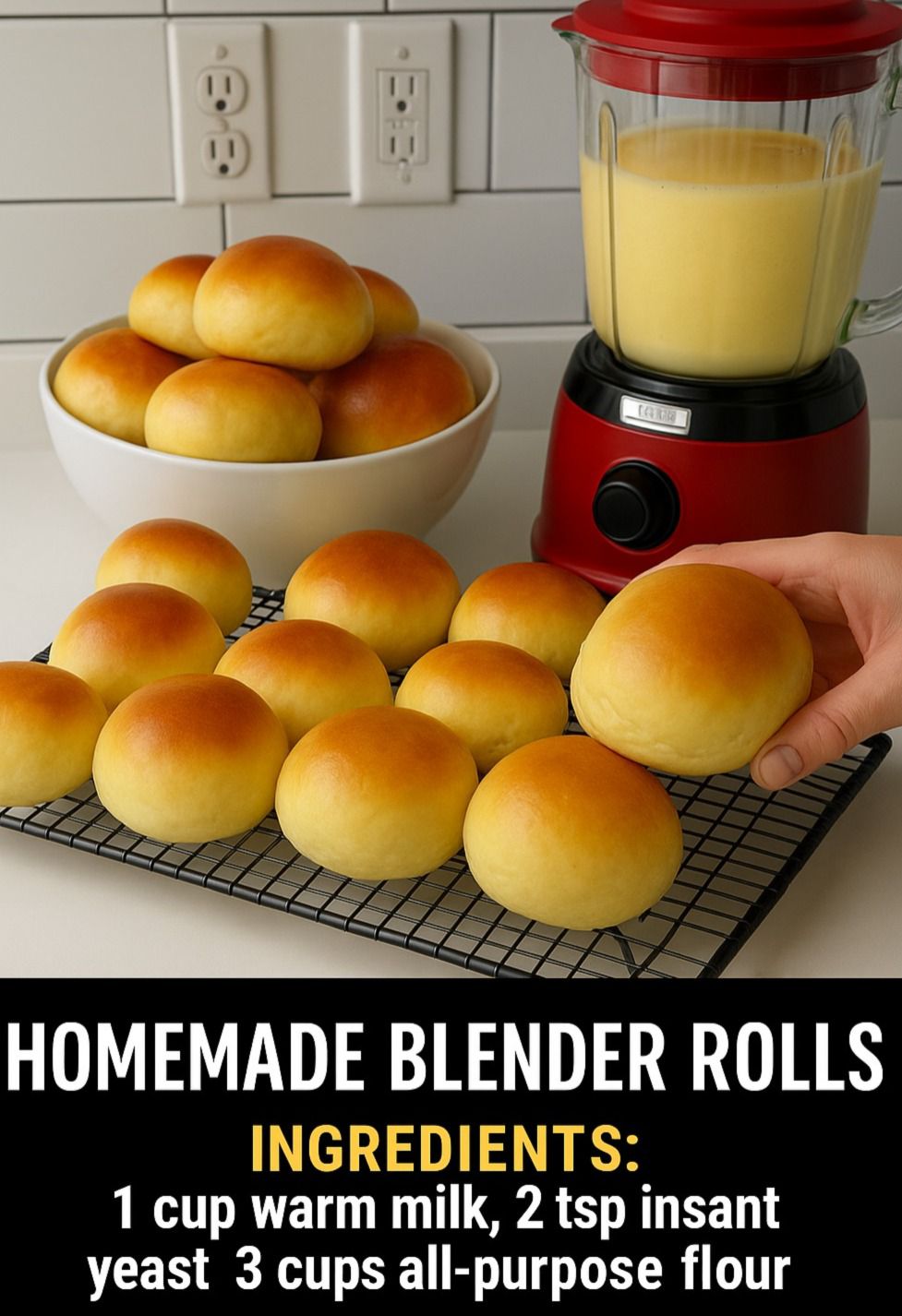Craving fresh, warm bread rolls but short on time or kneading patience? You’ve come to the right place! We’re diving into the wonderful world of blender bread rolls – a surprisingly simple way to whip up delicious rolls with minimal effort. Get ready to say goodbye to laborious kneading and hello to effortlessly fluffy homemade bread.
Why Blender Bread Rolls?

Let’s be honest, sometimes we want homemade bread without the hassle. That’s where blender bread rolls shine! They offer a fantastic shortcut for achieving that comforting aroma and taste without spending ages kneading dough. Here’s why you should give them a try:
- Speed and Convenience: The blender does most of the work, cutting down preparation time significantly.
- Minimal Effort: No more aching arms from kneading! The blender blends the ingredients to the perfect consistency.
- Consistent Results: Blenders provide even mixing, leading to consistent dough texture and delicious rolls every time.
- Easy Clean-Up: One bowl to clean – the blender jar!
The Basic Blender Bread Roll Recipe

This recipe is your starting point for bread roll bliss. Feel free to experiment with different flours, herbs, and seeds to create your own signature rolls!
Ingredients You’ll Need:

- 1 cup warm water (around 110°F/43°C)
- 2 1/4 teaspoons (1 packet) active dry yeast
- 1 tablespoon sugar
- 1 teaspoon salt
- 2 tablespoons olive oil (or any neutral oil)
- 2 1/2 – 3 cups all-purpose flour (plus more for dusting)
Step-by-Step Instructions:

- Activate the Yeast: In your blender, combine warm water, yeast, and sugar. Let it stand for 5-10 minutes until foamy. This indicates the yeast is active.
- Add the Remaining Ingredients: Add salt and olive oil to the blender. Gradually add the flour, starting with 2 1/2 cups.
- Blend the Dough: Pulse the blender a few times to combine the ingredients. Then, blend on medium speed for about 1-2 minutes until a smooth dough forms. The dough should be slightly sticky.
- First Rise: Pour the dough into a lightly oiled bowl, turning to coat. Cover with plastic wrap or a clean kitchen towel. Let it rise in a warm place for about 1 hour, or until doubled in size.
- Shape the Rolls: Gently punch down the dough. Turn it out onto a lightly floured surface. Divide the dough into 8-12 equal pieces. Shape each piece into a round roll.
- Second Rise: Place the rolls on a baking sheet lined with parchment paper. Cover with a clean kitchen towel and let them rise for another 30-45 minutes.
- Bake the Rolls: Preheat oven to 375°F (190°C). Bake for 15-20 minutes, or until golden brown.
- Cool and Enjoy: Let the rolls cool slightly on a wire rack before serving. Enjoy them warm with butter, jam, or your favorite toppings!
Tips for Perfect Blender Bread Rolls

Want to take your blender bread rolls to the next level? Here are a few tips and tricks:
- Use a Stand Blender: While a regular blender works, a high-powered blender or stand mixer with a dough hook will handle the dough more efficiently.
- Don’t Overmix: Overmixing can develop too much gluten, resulting in tough rolls. Blend just until the dough comes together.
- Adjust Flour as Needed: The amount of flour needed may vary depending on humidity and the type of flour used. Add more flour, a tablespoon at a time, if the dough is too sticky.
- Experiment with Flavors: Add herbs like rosemary or thyme, or spices like garlic powder or onion powder, to the dough for extra flavor.
- Brush with Egg Wash: For a shiny, golden-brown crust, brush the rolls with an egg wash (1 egg beaten with 1 tablespoon of water) before baking.
- Internal Links: Check out our other recipe for easy no-knead bread for another simple bread-making option!
Troubleshooting Your Blender Bread Rolls

Even with the best recipe, things can sometimes go wrong. Here’s how to troubleshoot common issues:
- Rolls are Flat: This could be due to inactive yeast, not enough gluten development, or not enough rising time. Ensure your yeast is fresh, don’t overmix the dough, and allow ample time for both the first and second rise.
- Rolls are Dense: This could be caused by too much flour or not enough rising time. Be careful not to add too much flour and make sure the dough doubles in size during the first rise.
- Rolls are Too Sticky: This usually means there is too much liquid or not enough flour. Add flour, one tablespoon at a time, until the dough is manageable.
Conclusion

So there you have it – a simple and delicious way to enjoy homemade bread rolls without the hassle of traditional kneading. Blender bread rolls are perfect for busy weeknights, quick breakfasts, or any time you’re craving fresh-baked goodness. Give this recipe a try, experiment with different flavors, and get ready to impress your family and friends with your newfound bread-making skills! Enjoy! We’d love to hear about your experience – leave a comment below and tell us what you think!
